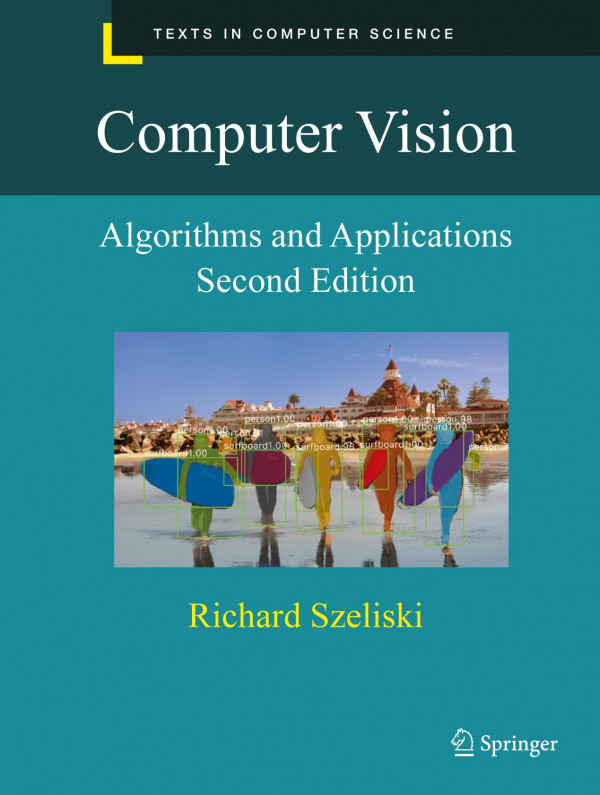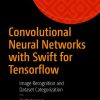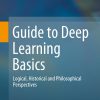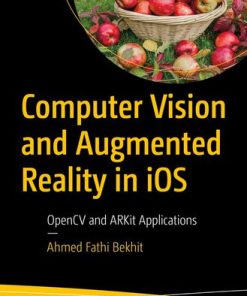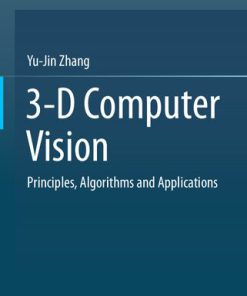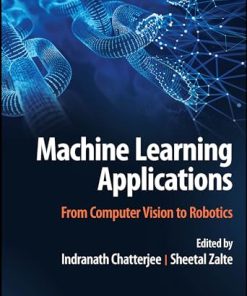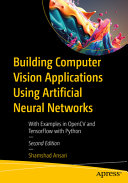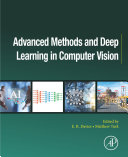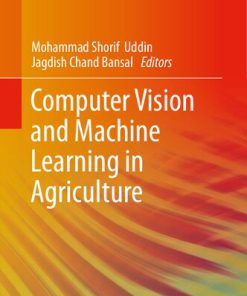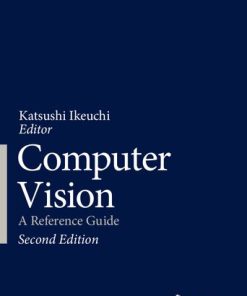Computer Vision Algorithms and Applications 2nd Edition by Richard Szeliski ISBN 3030343723 9783030343729
$50.00 Original price was: $50.00.$25.00Current price is: $25.00.
Computer Vision: Algorithms and Applications 2nd Edition by Richard Szeliski – Ebook PDF Instant Download/Delivery: 3030343723, 9783030343729
Full download Computer Vision: Algorithms and Applications 2nd Edition after payment
Product details:
ISBN 10: 3030343723
ISBN 13: 9783030343729
Author: Richard Szeliski
Computer Vision: Algorithms and Applications 2nd Edition:
Computer Vision: Algorithms and Applications explores the variety of techniques used to analyze and interpret images. It also describes challenging real-world applications where vision is being successfully used, both in specialized applications such as image search and autonomous navigation, as well as for fun, consumer-level tasks that students can apply to their own personal photos and videos.
More than just a source of “recipes,” this exceptionally authoritative and comprehensive textbook/reference takes a scientific approach to the formulation of computer vision problems. These problems are then analyzed using the latest classical and deep learning models and solved using rigorous engineering principles.
Topics and features:
- Structured to support active curricula and project-oriented courses, with tips in the Introduction for using the book in a variety of customized courses
- Incorporates totally new material on deep learning and applications such as mobile computational photography, autonomous navigation, and augmented reality
- Presents exercises at the end of each chapter with a heavy emphasis on testing algorithms and containing numerous suggestions for small mid-term projects
- Includes 1,500 new citations and 200 new figures that cover the tremendous developments from the last decade
- Provides additional material and more detailed mathematical topics in the Appendices, which cover linear algebra, numerical techniques, estimation theory, datasets, and software
Suitable for an upper-level undergraduate or graduate-level course in computer science or engineering, this textbook focuses on basic techniques that work under real-world conditions and encourages students to push their creative boundaries. Its design and exposition also make it eminently suitable as a unique reference to the fundamental techniques and current research literature in computer vision.
Computer Vision: Algorithms and Applications 2nd Edition Table of contents:
Chapter 1 Introduction
1.1 What is computer vision?
1.2 A brief history
1.3 Book overview
1.4 Sample syllabus
1.5 A note on notation
1.6 Additional reading
Chapter 2 Image formation
2.1 Geometric primitives and transformations
- 2.1.1 2D transformations
- 2.1.2 3D transformations
- 2.1.3 3D rotations
- 2.1.4 3D to 2D projections
- 2.1.5 Lens distortions
2.2 Photometric image formation - 2.2.1 Lighting
- 2.2.2 Reflectance and shading
- 2.2.3 Optics
2.3 The digital camera - 2.3.1 Sampling and aliasing
- 2.3.2 Color
- 2.3.3 Compression
2.4 Additional reading
2.5 Exercises
Chapter 3 Image processing
3.1 Point operators
- 3.1.1 Pixel transforms
- 3.1.2 Color transforms
- 3.1.3 Compositing and matting
- 3.1.4 Histogram equalization
3.2 Linear filtering - 3.2.1 Separable filtering
- 3.2.2 Examples of linear filtering
- 3.2.3 Band-pass and steerable filters
3.3 More neighborhood operators - 3.3.1 Non-linear filtering
- 3.3.2 Bilateral filtering
- 3.3.3 Binary image processing
3.4 Fourier transforms - 3.4.1 Two-dimensional Fourier transforms
- 3.4.2 Application: Sharpening, blur, and noise removal
3.5 Pyramids and wavelets - 3.5.1 Interpolation
- 3.5.2 Decimation
- 3.5.3 Multi-resolution representations
- 3.5.4 Wavelets
- 3.5.5 Application: Image blending
3.6 Geometric transformations - 3.6.1 Parametric transformations
- 3.6.2 Mesh-based warping
- 3.6.3 Application: Feature-based morphing
3.7 Additional reading
3.8 Exercises
Chapter 4 Model fitting and optimization
4.1 Scattered data interpolation
- 4.1.1 Radial basis functions
- 4.1.2 Overfitting and underfitting
- 4.1.3 Robust data fitting
4.2 Variational methods and regularization - 4.2.1 Discrete energy minimization
- 4.2.2 Total variation
- 4.2.3 Bilateral solver
- 4.2.4 Application: Interactive colorization
4.3 Markov random fields - 4.3.1 Conditional random fields
- 4.3.2 Application: Interactive segmentation
4.4 Additional reading
4.5 Exercises
Chapter 5 Deep Learning
5.1 Supervised learning
- 5.1.1 Nearest neighbors
- 5.1.2 Bayesian classification
- 5.1.3 Logistic regression
- 5.1.4 Support vector machines
- 5.1.5 Decision trees and forests
5.2 Unsupervised learning - 5.2.1 Clustering
- 5.2.2 K-means and Gaussians mixture models
- 5.2.3 Principal component analysis
- 5.2.4 Manifold learning
- 5.2.5 Semi-supervised learning
5.3 Deep neural networks - 5.3.1 Weights and layers
- 5.3.2 Activation functions
- 5.3.3 Regularization and normalization
- 5.3.4 Loss functions
- 5.3.5 Backpropagation
- 5.3.6 Training and optimization
5.4 Convolutional neural networks - 5.4.1 Pooling and unpooling
- 5.4.2 Application: Digit classification
- 5.4.3 Network architectures
- 5.4.4 Model zoos
- 5.4.5 Visualizing weights and activations
- 5.4.6 Adversarial examples
- 5.4.7 Self-supervised learning
5.5 More complex models - 5.5.1 Three-dimensional CNNs
- 5.5.2 Recurrent neural networks
- 5.5.3 Transformers
- 5.5.4 Generative models
5.6 Additional reading
5.7 Exercises
Chapter 6 Recognition
6.1 Instance recognition
6.2 Image classification
- 6.2.1 Feature-based methods
- 6.2.2 Deep networks
- 6.2.3 Application: Visual similarity search
- 6.2.4 Face recognition
6.3 Object detection - 6.3.1 Face detection
- 6.3.2 Pedestrian detection
- 6.3.3 General object detection
6.4 Semantic segmentation - 6.4.1 Application: Medical image segmentation
- 6.4.2 Instance segmentation
- 6.4.3 Panoptic segmentation
- 6.4.4 Application: Intelligent photo editing
- 6.4.5 Pose estimation
6.5 Video understanding
6.6 Vision and language
6.7 Additional reading
6.8 Exercises
Chapter 7 Feature detection and matching
7.1 Points and patches
- 7.1.1 Feature detectors
- 7.1.2 Feature descriptors
- 7.1.3 Feature matching
- 7.1.4 Large-scale matching and retrieval
- 7.1.5 Feature tracking
- 7.1.6 Application: Performance-driven animation
7.2 Edges and contours - 7.2.1 Edge detection
- 7.2.2 Contour detection
- 7.2.3 Application: Edge editing and enhancement
7.3 Contour tracking - 7.3.1 Snakes and scissors
- 7.3.2 Level Sets
- 7.3.3 Application: Contour tracking and rotoscoping
7.4 Lines and vanishing points - 7.4.1 Successive approximation
- 7.4.2 Hough transforms
- 7.4.3 Vanishing points
7.5 Segmentation - 7.5.1 Graph-based segmentation
- 7.5.2 Mean shift
- 7.5.3 Normalized cuts
7.6 Additional reading
7.7 Exercises
Chapter 8 Image alignment and stitching
8.1 Pairwise alignment
- 8.1.1 2D alignment using least squares
- 8.1.2 Application: Panography
- 8.1.3 Iterative algorithms
- 8.1.4 Robust least squares and RANSAC
- 8.1.5 3D alignment
8.2 Image stitching - 8.2.1 Parametric motion models
- 8.2.2 Application: Whiteboard and document scanning
- 8.2.3 Rotational panoramas
- 8.2.4 Gap closing
- 8.2.5 Application: Video summarization and compression
- 8.2.6 Cylindrical and spherical coordinates
8.3 Global alignment - 8.3.1 Bundle adjustment
- 8.3.2 Parallax removal
- 8.3.3 Recognizing panoramas
8.4 Compositing - 8.4.1 Choosing a compositing surface
- 8.4.2 Pixel selection and weighting (deghosting)
- 8.4.3 Application: Photomontage
- 8.4.4 Blending
8.5 Additional reading
8.6 Exercises
Chapter 9 Motion estimation
9.1 Translational alignment
- 9.1.1 Hierarchical motion estimation
- 9.1.2 Fourier-based alignment
- 9.1.3 Incremental refinement
9.2 Parametric motion - 9.2.1 Application: Video stabilization
- 9.2.2 Spline-based motion
- 9.2.3 Application: Medical image registration
9.3 Optical flow - 9.3.1 Deep learning approaches
- 9.3.2 Application: Rolling shutter wobble removal
- 9.3.3 Multi-frame motion estimation
- 9.3.4 Feature-based optical flow
- 9.3.5 Local matching
9.4 Additional reading
9.5 Exercises
Chapter 10 3D vision
10.1 Stereo matching
- 10.1.1 Stereo algorithms
- 10.1.2 Correspondence problems
- 10.1.3 Semi-global matching
10.2 Structure from motion - 10.2.1 Epipolar geometry
- 10.2.2 Visual odometry
- 10.2.3 3D reconstruction
- 10.2.4 SLAM
- 10.2.5 Multi-view stereo
10.3 Light field imaging - 10.3.1 Application: Plenoptic cameras
- 10.3.2 Holography
- 10.3.3 Time-of-flight imaging
10.4 Depth sensing - 10.4.1 Depth from stereo
- 10.4.2 Structured light
- 10.4.3 Time-of-flight sensors
- 10.4.4 Lidar
10.5 Additional reading
10.6 Exercises
Chapter 11 Visual tracking
11.1 Tracking by detection
11.2 Tracking by matching
- 11.2.1 Optical flow-based tracking
- 11.2.2 Features-based tracking
11.3 Deep learning for tracking
11.4 Tracking algorithms - 11.4.1 Kalman filtering
- 11.4.2 Particle filtering
- 11.4.3 Mean-shift tracking
11.5 Applications of visual tracking
11.6 Additional reading
11.7 Exercises
Chapter 12 Advanced topics in computer vision
12.1 3D reconstruction
12.2 Computational photography
12.3 Deep learning for vision
12.4 Visual SLAM
12.5 Applications in robotics
12.6 Additional reading
12.7 Exercises
Index
People also search for Computer Vision: Algorithms and Applications 2nd Edition:
szeliski r 2010 computer vision algorithms and applications springer
computer vision algorithms and applications pdf
computer vision algorithms and applications 2nd ed
szeliski r 2010 computer vision algorithms and applications
computer vision algorithms and applications 2nd edition by richard szeliski
Tags:
Richard Szeliski,Computer Vision,Algorithms,Applications
You may also like…
Computers - Applications & Software
Computers - Computer Graphics & Design
3-D Computer Vision: Principles, Algorithms and Applications 1st Edition Yu-Jin Zhang
Computers - Artificial Intelligence (AI)
Machine Learning Applications From Computer Vision to Robotics 1st Edition Indranath Chatterjee
Computers - Applications & Software
Building Computer Vision Applications Using Artificial Neural Networks, 2nd Edition Shamshad Ansari
Computers - Artificial Intelligence (AI)
Computers - Artificial Intelligence (AI)
Computers - Computer Science
Computers - Computer Science
Computer Vision: A Reference Guide, 2e 2nd Edition Katsushi Ikeuchi
Mathematics - Applied Mathematics
Computer Vision for X Ray Testing Imaging Systems Image Databases and Algorithms Domingo Mery

